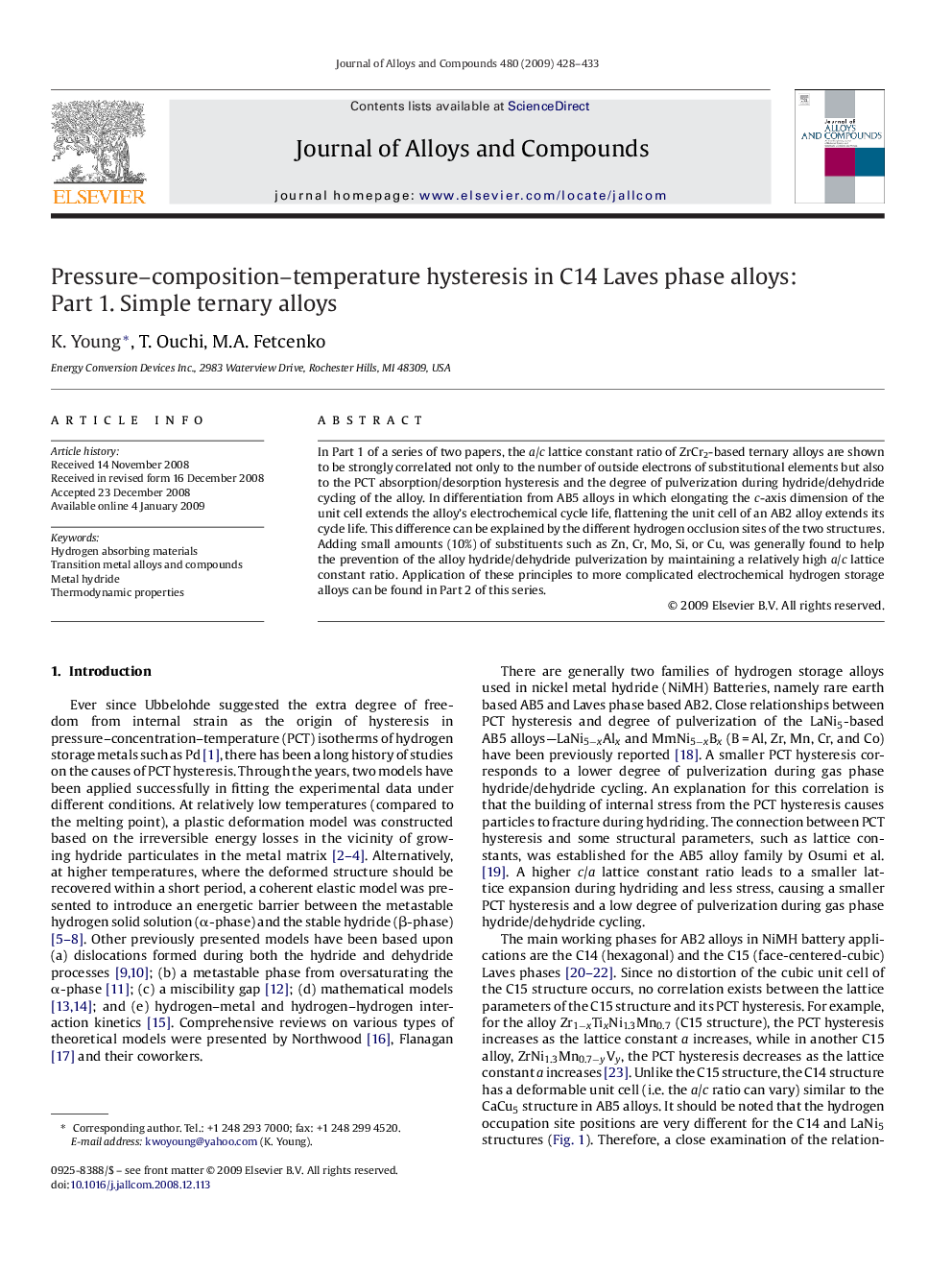| Article ID | Journal | Published Year | Pages | File Type |
|---|---|---|---|---|
| 1621064 | Journal of Alloys and Compounds | 2009 | 6 Pages |
In Part 1 of a series of two papers, the a/c lattice constant ratio of ZrCr2-based ternary alloys are shown to be strongly correlated not only to the number of outside electrons of substitutional elements but also to the PCT absorption/desorption hysteresis and the degree of pulverization during hydride/dehydride cycling of the alloy. In differentiation from AB5 alloys in which elongating the c-axis dimension of the unit cell extends the alloy's electrochemical cycle life, flattening the unit cell of an AB2 alloy extends its cycle life. This difference can be explained by the different hydrogen occlusion sites of the two structures. Adding small amounts (10%) of substituents such as Zn, Cr, Mo, Si, or Cu, was generally found to help the prevention of the alloy hydride/dehydride pulverization by maintaining a relatively high a/c lattice constant ratio. Application of these principles to more complicated electrochemical hydrogen storage alloys can be found in Part 2 of this series.
